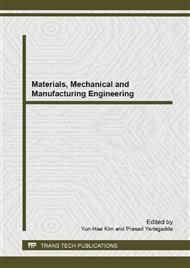p.553
p.558
p.564
p.569
p.574
p.581
p.586
p.591
p.596
Influence of Port Plate Closed-Compression Angle on the Vibration and Noise of a Water Hydraulic Piston Pump
Abstract:
Fluid-borne noise in piston pump is an important issue that has not been solved well until now. To reduce the vibration and noise of a water hydraulic piston pump, a port plate with a closed-compression angle and a silencing groove was designed for the pre-compression process. Three types of grooves were selected as the silencing structures and investigated in this paper. Through multi-objective optimization based on genetic algorithm, it is found that the port plate with the combination of a closed-compression angle and a silencing groove has better silencing effect than that without a closed-compression angle, due to its ability of simultaneously balancing the pressure gradient in the pre-compression process and the output flow pulsation of the pump. In this case, U-shaped groove with the angle is superior to the other two types in reducing the pump noise. This work presents an effective method for solving the fluid-borne noise of hydraulic piston pump.
Info:
Periodical:
Pages:
574-580
Citation:
Online since:
November 2013
Authors:
Price:
Сopyright:
© 2014 Trans Tech Publications Ltd. All Rights Reserved
Share:
Citation:


